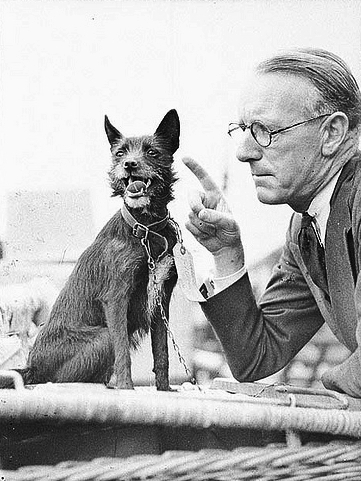I was writing at one of my favourite coffee shops on Vancouver Island when I came across this book.
Brown Gold: The Amazing Story Of Coffee
What caught my eye was the selling feature.
“ILLUSTRATED WITH 32 PHOTOGRAPHS, 8 IN FULL COLOR.”
Wow. Full color?!
Then I realized…
It was published in 1952.
In 1952, having 8 full colour images in a book was remarkable and highly relevant, as it would be a key decision criteria in deciding whether to buy the book.
But, if you put that same message on the front cover of your book today as the main selling feature, you’d be laughed off the shelves.
When people say the secret to content marketing is relevance, this is what they mean.
So, here is a 2 step plan to help you write relevant content that will convert causal browsers into customers.
STEP 1: Create Your Customer Persona
Who is your customer?
No, really.
I’m not talking about their personal characteristics (age, gender, income), relative geography (location, access to products or services and relevant technology), or their needs (why they want you, price and quality perception), but who they are.
Because it’s hard to keep that information in your head, and translate that into a focus so you’re writing for your target customer every time.
But it’s easy to write for someone.
Imagine you’re a sports rehabilitation physiotherapist.
It’s the difference between knowing that your average customer is male, 35-50 years old, played sports when they were younger, lives an hour from your office, and needs help so they can stay fit and healthy for their families.
And knowing George
George is a 42 year old male who played lacrosse in high school and soccer in university. He’s been on several beer leagues since, and tore a previously injured muscle in his leg.
He needs help rehabilitating it, so he can continue to play on his league and go for hikes with his kids on the weekend. He lives 45 minutes from your office, and can afford 2 sessions a week based on his medical care.
George is your customer persona.
How to start
It’s easy to get carried away, especially if you’re creative.
So, start with one buyer persona. As you finesse it, and depending on the scope of your business and the variety of customers you have, it may make sense to develop several personas.
The goal is to embrace your average customer, while choosing specific attributes about them that could be true.
For example, George could easily have been 35 or 45 years old. What matters is that I’ve chosen an age within the average range of my target customer, and that will help me stay relevant when I’m creating content to attract them.
If you’re new to creating customer personas, and would like step by step guidance on how to build one, download and check out this free template from Hubspot: The Marketer’s Guide to Creating Buyer Personas.
But I am my target customer!
If you are your target customer, it’s easy.
You don’t need to think about who your customer is, what they want and why they buy because you are your target customer.
Most of us aren’t that lucky.
This is why buying personas are ideal. They’re an easy way to “get in the head of your customer” and understand your customer, without actually being your customer.
Plus, if you work in a small team, buying personas can also keep everyone on track. For example, instead of someone on our team saying, “Well, I wouldn’t buy it because I don’t like feature x,” the conversation turns into, “Well, I’m not sure if Sally would benefit from feature x because of…”
Draw them
Once you’ve created your customer persona, do a quick drawing of who they are, highlighting it with the key information.
- Use Stick Figures: You’re not creating a Picasso, you’re creating a tool that will help you keep your content relevant.
- Don’t Overload It With Facts: Simply include a few that will help you remember your customer’s pain point, to remind you why they’d engage with the content you’re creating.
- Carry It Everywhere: Have that picture beside you when you blog. This will help you keep your content focused – and the magic ingredient in content marketing – relevant.
Be obsessed with data
The key to creating successful customer personas is data – make sure that your persona is an accurate reflection of your current customers. Because if they’re happy, and you can attract similar people, chances are they will be happy customers too.
If you’re trying to evolve your customer base, you can also create a separate persona for future target customers, to ensure your content is attracting and converting your ideal customers.
And as always, test your personas as part of your content strategy. Measure the results, and modify them over time to improve and refine your focus.
SEO bonus
Once you’re happy with your customer persona, you can adopt it into your entire inbound marketing campaign.
When you’re ready to do this, check out this great article from the Content Marketing Institute. It takes this conversation one step further and shows you how you can incorporate your buyer persona into your SEO strategy in 10 simple steps.
STEP 2: Become Your Customer Persona
This may sound silly.
And it will help you write relevant content.
Once you know who your customer is, revisit your business and walk through the customer lifecycle process from the eyes of your customer persona.
Start at the beginning during the discovery phase and move through the entire process – what happens before, during and after George buys your product or uses your service?
This will help you identify areas that are most important to George. Once you know this, it will be easier to figure out what issues you should address in your content, and how you should position it, so your content is as relevant as possible.
Because relevant content converts customers.
Remember, there may be hundreds or even thousands of blogs by small businesses owners in a similar field.
Being relevant will help you stand out.
Final Thoughts: How To Write Relevant Content
Some industries change really fast, like online and inbound marketing.
Others are slower to change, like legal and accounting professions.
Understand where your company fits on this spectrum. Then review your content. In some cases, you may find that a post you wrote last year is no longer relevant.
- If that’s the case, and it requires a small change to bring it up to date, it may make sense to write an afterword at the bottom of your post, sharing the update.
- If it’s a larger change, it may make sense to follow up with a new post, linking to the older one as a historical reference.
Showing your relevant and staying on top of your industry will help you earn confidence and trust from your fans, which is key to converting casual browsers into customers.
So, how do you keep your content marketing relevant?







